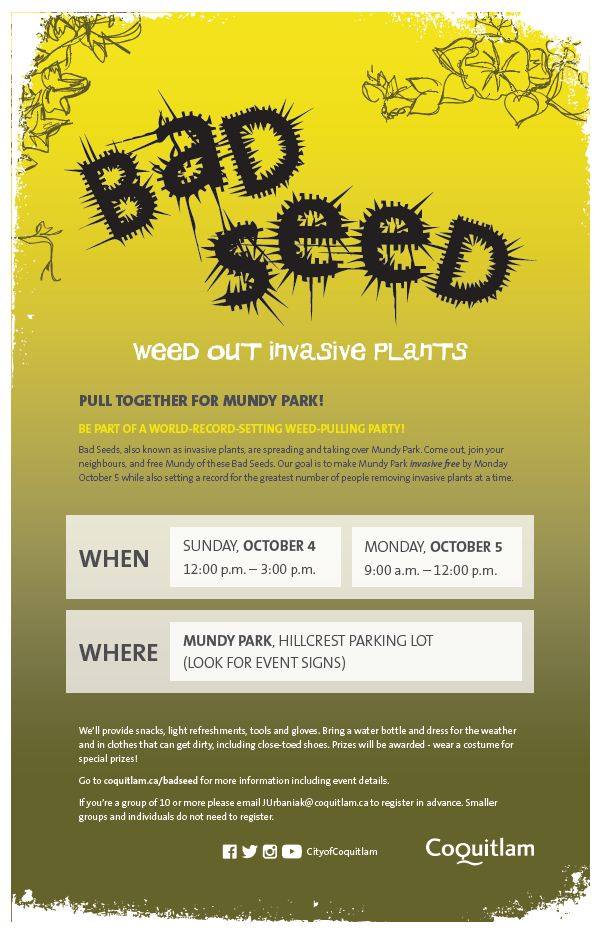


What do you do with deciduous trees that continue to re-sprout and regrow from cut stumps? What if those trees are located in areas where harsh ( but effective) chemical herbicide use is restricted? Think urban areas and community watersheds.
As I recently found out while visiting a water quality pond, you can use a bio-herbicide called Chontrol Peat Paste.
Details: www.mycologic.ca.
The procedure is fairly simple. Apply a thin layer of the paste to freshly cut stumps from late summer to fall. The pictures below show our native alders, Alnus rubra (Betulaceae family). The trees are interfering with the water quality pond whose function it is to prevent sand, coarse silt and other contaminants from entering environmentally sensitive streams; and to help maintain the flow required to support aquatic life.
The product is only available commercially and it will be interesting to see effectiveness data come in.
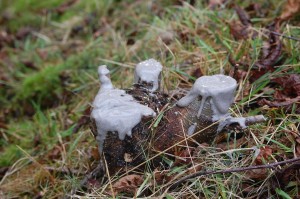
Chontrol Peat Paste after application to freshly cut stumps
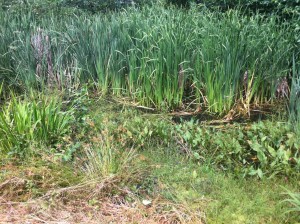
Water quality pond where alder forest would interfere too much
The Inspiration Garden run by the City of Coquitlam is a fun place to visit for all home gardeners and green professionals. I often bike by and stop to brush up on my plant identification skills. And I visit one of my favorite tree species, a specimen of Albizia julibrissin. Its flower fragrance has to be experienced. I can not describe it. It is blooming right now….
There are Ask the Gardener sessions on Thursdays from 6 and 8pm; the iGarden is staffed on Tuesdays, Thursdays, and Saturdays.
If you find yourself in Coquitlam or have some spare time on Saturdays, stop by for a visit. It is located in Town Centre Park, on the corner of Guildford Way and Pipeline Road. Bring your questions, walk through the garden and test your plant knowledge. Or just sit down and relax.
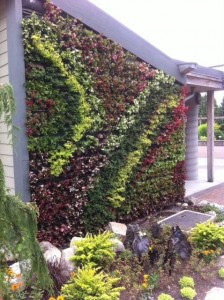
Living wall, a developing trend
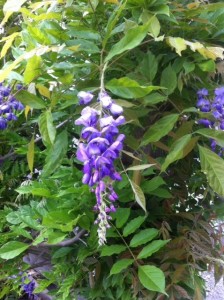
Wisteria floribunda (Japanese wisteria)
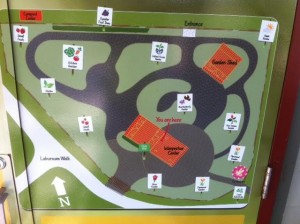
Every year I look for new experiences, both in my personal life and at work. This year I got a chance to work on annual cuts for the first time. This involves line-trimming meadow like fields and buffer zones using heavy-duty line. It can take days, and it will not be done for another year. Large areas are covered by Deere ride-on mowers.
Sometimes it feels like harvest time and the view can be great depending on your exact location. If you are working close to people, stop and let them pass.
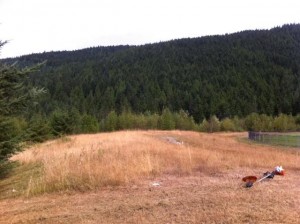
Not a bad place to spend a day….
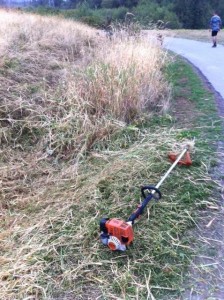
Stop to let people and pets go by…..
If time permits, harvest ripe blackberries (Rubus discolor) before pushing back the thorny invasive canes. There are other hazards! The tall growth can hide all sorts of objects and small animals. I recommend using a full face shield but they are awkward and expensive. Goggles, ear protection and pants are mandatory. Use a hat, sun screen and bring water.
Best Advice: if you are not using a full face shield, CLOSE YOUR MOUTH! Little voles usually run away from the noise but I did not expect to decapitate two garter snakes in the space of three minutes. And I hate snakes. Harsh previous experience has thought me to look out for improperly discarded doggy bags; the contents defy description after six months of sitting in a meadow. Then there is garbage and rocks which can become nasty projectiles.
It feels great once the work is safely completed.
Imagine my excitement last year when I discovered that my kids were having play-dates with Steve Whysall’s grandkids! Mr. Whysall has been writing about gardening for the Vancouver Sun since 1994. Look for his column on Fridays, usually on page C3. You are guaranteed to learn new things. I often rip out the section and file it.
Mr. Whysall has also published several books and organizes overseas garden tours. While the tours are attractive they are way over my family budget. I am, however, ready to plug what I consider to be his most useful book.
Best plant picks, slightly beat up and autographed, has served me really well. The book is a neat month by month guide for our West Coast gardens. I use it to practice plant identification and to review the list of garden tasks to be performed on a particular month. As the seasons pile up, I can run through the list of plants much quicker. Always learn about new plants and review them.
For more information visit www.stevewhysall.com. It is my humble opinion that the website could use an upgrade but it is still useful. If your family budget allows, please subscribe to the Vancouver Sun newspaper at www.vancouversun.com.
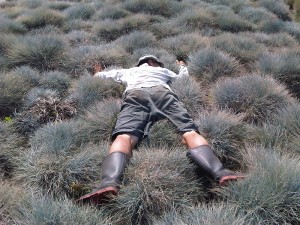 I came across the term “industrial athlete” while reading an article on caring for your body in Arborist News (February 2013). All green industry workers work hard in the field all year and taking care of their bodies is critical to their work performance.
I came across the term “industrial athlete” while reading an article on caring for your body in Arborist News (February 2013). All green industry workers work hard in the field all year and taking care of their bodies is critical to their work performance.
Some highlights. Many workers don’t eat enough, skimping on breakfast and skipping lunch because of the sluggishness they experience after eating. Proper hydration is important; excessive caffeine consumption contributes to dehydration.
Rest and recovery are important; and so is sleep.
Workers who take care of their bodies perform better and make a larger contribution to their company’s success. Review the article and take care of your body Properly!
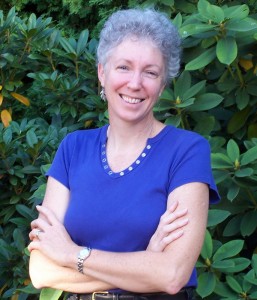 Dr. Linda Chalker-Scott is my hero. She is an associate professor and extension urban horticulturist at Washington State University.
Dr. Linda Chalker-Scott is my hero. She is an associate professor and extension urban horticulturist at Washington State University.
So why a hero?
If you are a gardener or green professional, you will love her work. If you read it and study it, it will make you a better professional or gardener. Google her today and thank me later. I hope to meet her at a future seminar…..
I always wanted to do this: travel to Japan, explore on a bike and catalogue as many japonica/japonicum plants as possible. The list below is from my visit this past May to Niigata City, Niigata prefecture, Japan. It’s situated on the Japan Sea in what is known as the snow country.
Please run through the list and see how many you know. BC residents should get a high score.
This show is a must-see for all local green professionals. Walking through the trade show is always interesting. Sometimes there are plant identification quizzes and when you feel like taking a break, head for the beer garden.
There are always plenty of interesting seminars and most are good for education credits, if you are ISA and Landscape Industry Certified. If you are not certified, why not?
My favorite is the all-day Urban Forestry Symposium. The speakers are tree experts with Ph.D.s and the fee includes lunch. So not only do you get to learn new things about trees, you also get a chance to network and meet new green professionals. Priceless.
Most landscape companies have free or discounted tickets. Ask your employer to cover your time so you can attend some courses. I feel it’s time well-spent.
See you there!
Registration is now open!
www.CanWestHortExpo.com
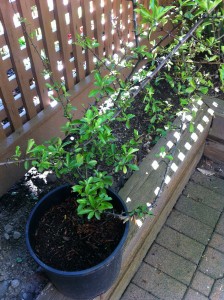 Recently I was asked to plant thirty nine Pyracanthas in New Westminster so it’s a good time to examine this evergreen shrub belonging to the Rosaceae family.
Recently I was asked to plant thirty nine Pyracanthas in New Westminster so it’s a good time to examine this evergreen shrub belonging to the Rosaceae family.
It’s related to Cotoneaster but its leaves have serrated margins and it has thorns.
White flowers come out in early summer and later berries. Pyracantha is a good alternative to artificial walls and fences. It’s also good for wildlife because birds can nest in it, the summer flowers are good for bees and the berries provide food.
Pyracantha is easy to grow and requires little maintenance. Pruning for shape can be done three times a year.
Here is the key feature: the dense thorny structure makes Pyracantha valued in situations where an impenetrable barrier is required. This is why I found myself in New Westminster with thirty nine prickly specimens. The planting happened along the outer parkade walls because of several recent break-ins. Watch out bad people!